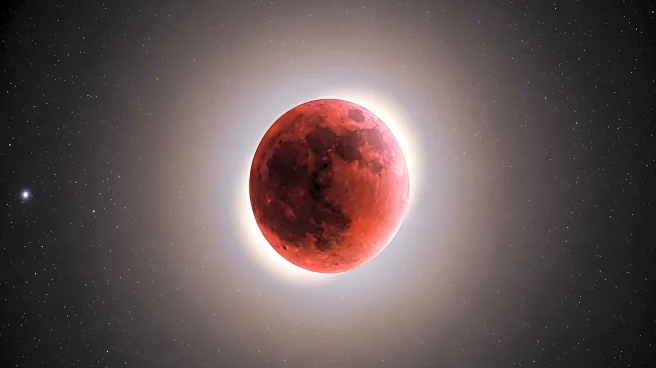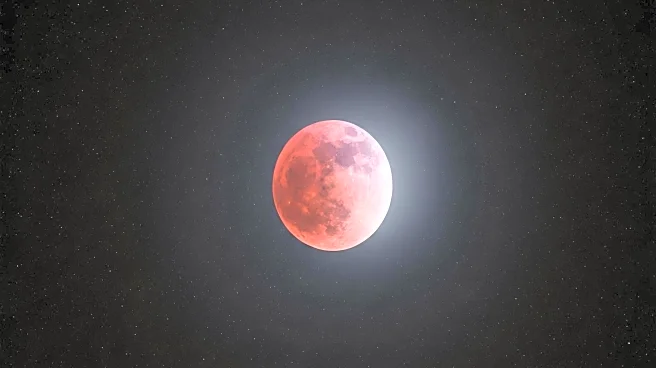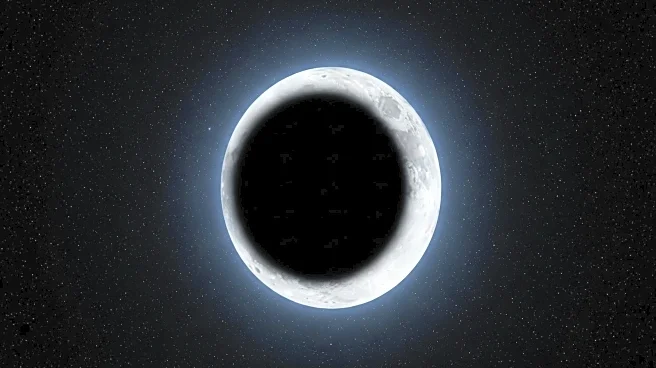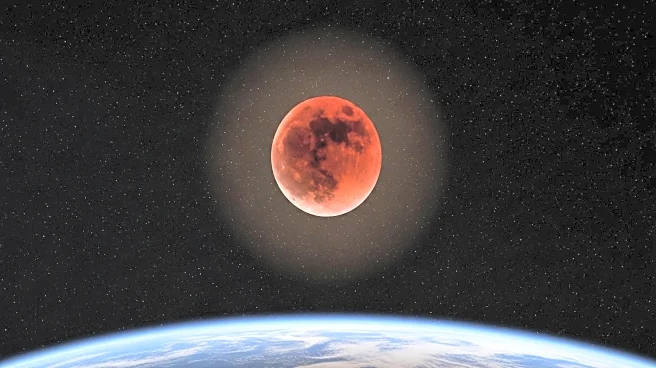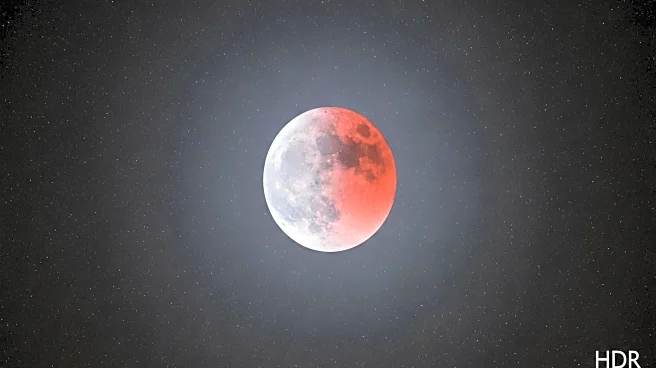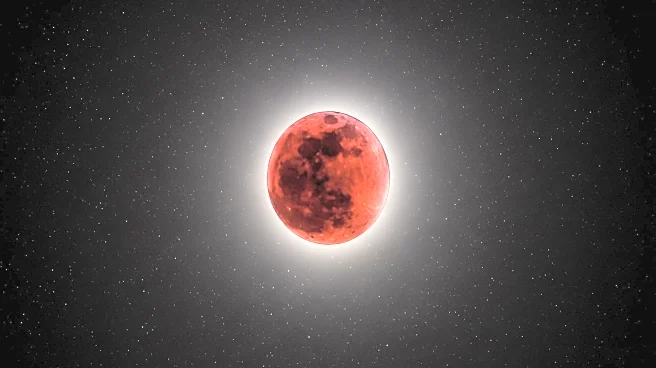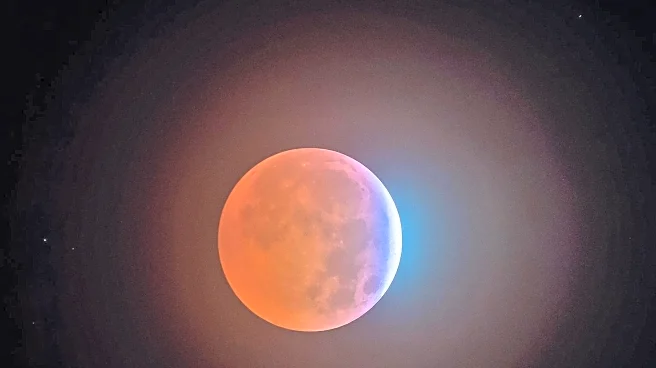What's Happening?
On September 7, 2025, a rare astronomical event will occur as the Corn Moon coincides with a total lunar eclipse, creating a Blood Moon. This event is expected to be one of the most spectacular skywatching experiences of the year, with the moon turning a dramatic shade of red. The eclipse will last for nearly 82 minutes of totality, from 1:30 to 2:52 p.m. Eastern, with partial phases extending between 11:28 a.m. and 4:55 p.m. Eastern. Although the eclipse will not be visible from North America, it will be best viewed in regions such as Australia, India, Cairo, and South Africa. According to Space.com, almost 88% of the world's population will see at least part of the event, while 77% will witness totality.
Why It's Important?
The Corn Moon, named for its association with the harvest season in the Northern Hemisphere, holds cultural significance rooted in Native American traditions. This celestial event offers a unique opportunity for global communities to engage with astronomical phenomena, fostering interest in science and nature. The widespread visibility of the eclipse underscores the interconnectedness of global skywatching experiences, promoting cultural exchange and scientific curiosity. For astronomers and enthusiasts, the event provides a chance to study lunar eclipses and their effects on the moon's appearance, contributing to ongoing research in astronomy.
What's Next?
As the Corn Moon approaches, skywatchers and astronomers worldwide are preparing for the event, with plans to capture and study the eclipse. Educational institutions and observatories may organize viewing events and discussions to enhance public understanding of lunar phenomena. The event could inspire future astronomical research and public interest in upcoming celestial occurrences. Additionally, cultural celebrations tied to the Corn Moon may be observed, highlighting the historical and agricultural significance of this time of year.
Beyond the Headlines
The Corn Moon's occurrence during a total lunar eclipse presents an opportunity to explore the cultural and historical dimensions of lunar events. Native American tribes historically used the Corn Moon to mark the harvest season, reflecting the moon's role in agricultural cycles. This event may prompt discussions on the intersection of science and culture, emphasizing the importance of preserving traditional knowledge alongside scientific advancements. Furthermore, the global visibility of the eclipse highlights the universal nature of astronomical phenomena, encouraging cross-cultural appreciation and collaboration.
